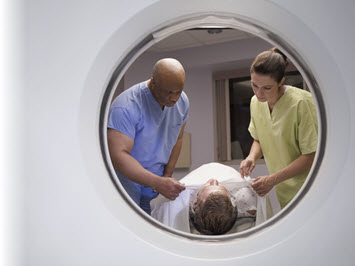
Managing the Growing Shortages of Healthcare Techs and Therapists
 Now that labor shortages have hit the allied healthcare workforce, hospitals and healthcare organizations will have to get more innovative in staff planning and management.
Now that labor shortages have hit the allied healthcare workforce, hospitals and healthcare organizations will have to get more innovative in staff planning and management.
Several reasons account for the growing shortage of medical imaging technicians, respiratory therapists and medical laboratory technicians, according to Linda Murphy, Division Vice President for Allied at AMN Healthcare.
The Bureau of Labor Statistics estimates that job openings for medical lab technologists will grow 14% by 2024, but many in the current workforce are now hitting retirement age, she said. At the same time, the patient population is swelling, due to aging Baby Boomers and the newly insured through the Affordable Care Act (ACA).
Impact on Patient Care
The staffing shortage can affect hospital efficiency and patient care, especially since lab tests and preventative screenings are critical to 60% to 70% of medical decisions that lead to diagnosis and treatment, according to the National Center for Biotechnology Information.
Apart from delaying diagnoses, longer waits for tests and screenings could also mean that some patients may take their business elsewhere and switch providers, Murphy explained.
“This is never good for anyone, especially the doctor, who has followed patients for a long time and knows their personal history,” she said.
How Can Healthcare Organizations Cope?
One the best things hospitals can do to deal with the shortage is to get more proactive with staff management, including better staff planning around staff members going out on personal leave, paid time off or wintertime when more people get sick.
"We have hospitals looking at winter needs now in June," Murphy said. "They’re very smart and strategic."
Hospitals and healthcare organizations also need to understand the marketplace, in which their list of "wants" may need to be whittled down to a list of "musts."
“Even though they may want a candidate with four particular qualities, they may have to settle for three,” Murphy said. “They have to be OK with that, and have the backup support to assist.”
For example, a hospital may hire someone who has good clinical expertise but is unfamiliar with the hospital’s computer system. In that case, the hospital may need to turn to a staff member in-house to provide training on that system.
“A lot of the times we’re asking the client, ‘Are you willing to…?’ and ‘Would you consider somebody with…?’ ” Murphy said. “That’s the most important thing. Once our clients are willing to expand their parameters, they open themselves up to a lot more candidates.”
Aside from planning and adjusting expectations, hospitals and healthcare organizations might think of offering training programs that work in tandem with educational facilities to help nursing assistants or patient care technicians get certified as medical technologists or phlebotomy technicians, for example.
“That would be a nice way to attract candidates to the hospital,” she said, “and they would most likely remain loyal to that organization, because the hospital invested in them.”


